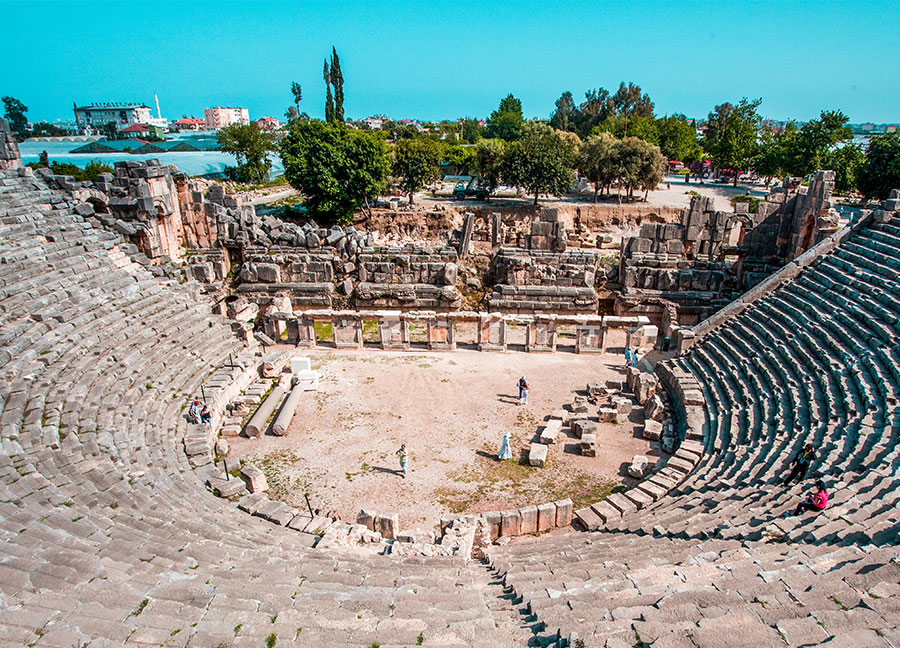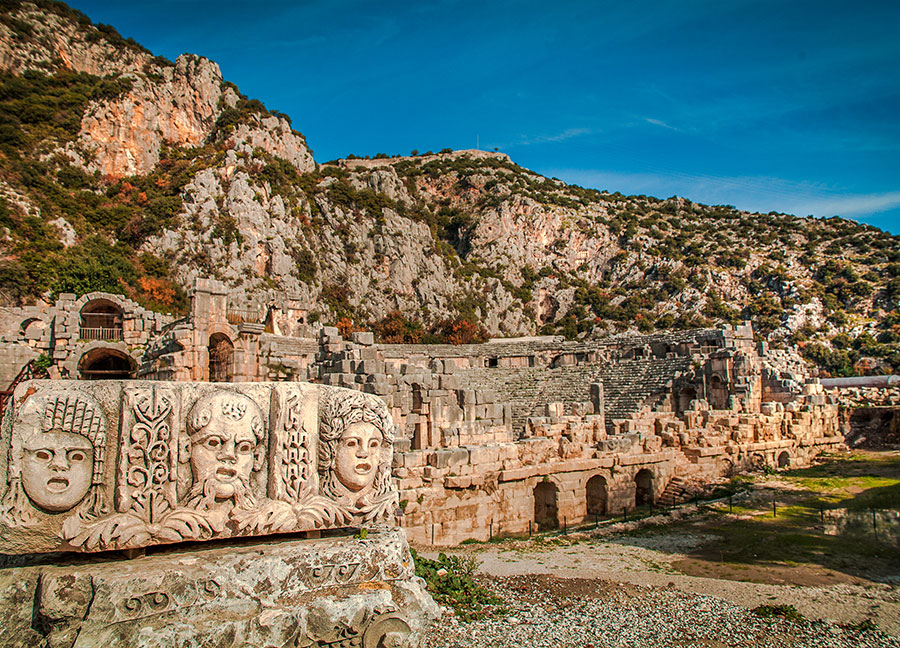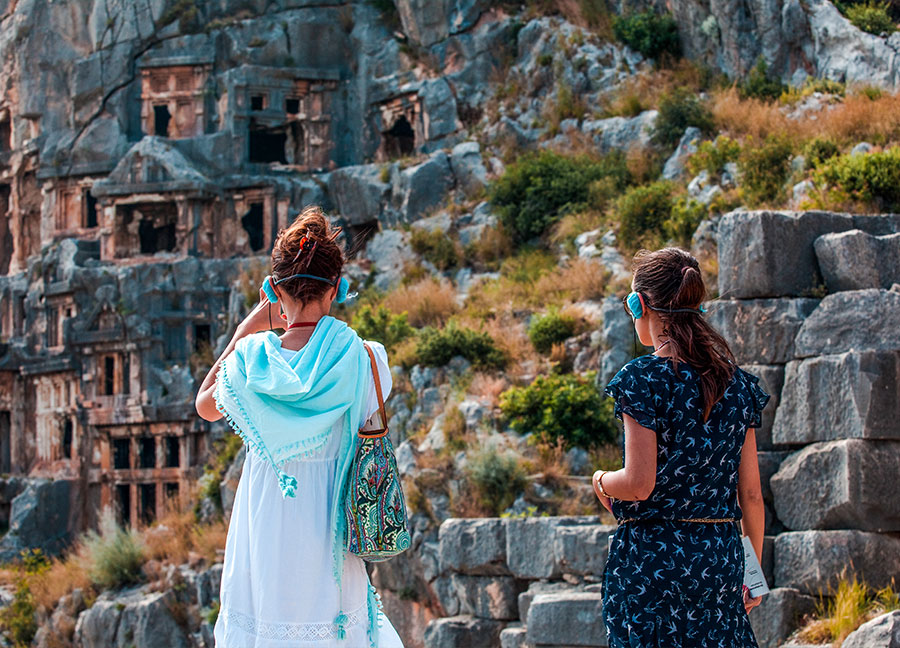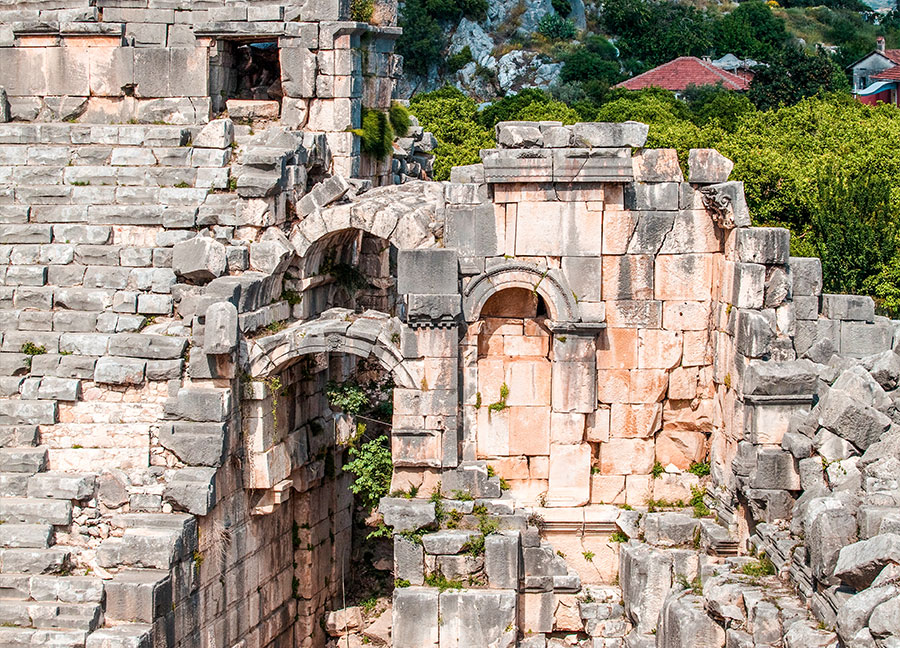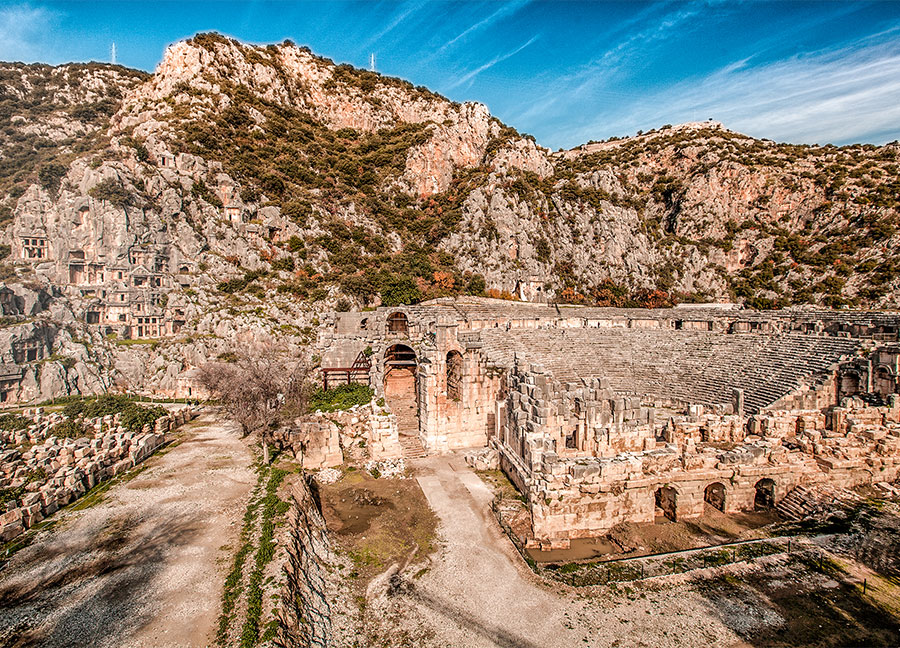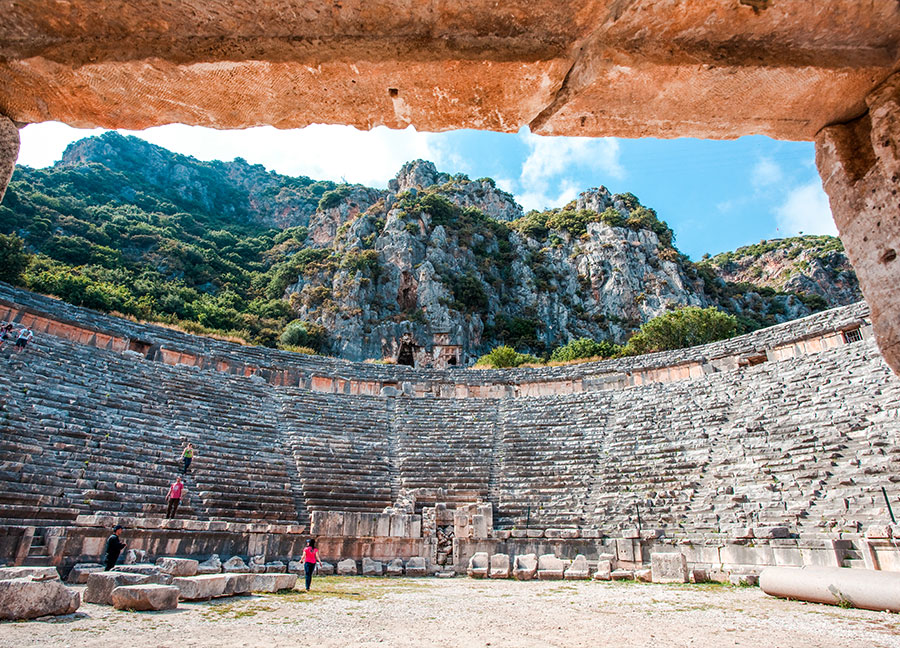The Ancient City of Myra is 2 km from the town center in the Demre district of Antalya. It is 30 km from Finike and 45 km from Kaş.
The city was founded on the plain of the same name. It is especially famous for the Lycian Period rock tombs, Roman Period theater, and Byzantine St. Nicholas Church (Santa Claus). It is known that St. Nicholas was the bishop of Myra in the 4th century, and the city was the capital of Lycia. The ancient city is of special importance for Christianity, as it is the city where St.Paul and his friends came to visit.
The connection of the ancient city of Myra with the sea was established through the canal to the west of the Demre Stream. Transportation and maritime trade activities were also carried out from Andriake Port on the other side of the canal.
The rock tombs in the ancient city are a unique example of craftsmanship reflecting Lycian architecture. It offers an extraordinary view to its visitors. Coins and inscriptions, together with the tombs, show that the Ancient City of Myra has existed in history since the 5th century BC.
The city, where great developments took place in the 2nd century, lost its power from the 7th century due to floods, alluviums brought by the Demre Stream, earthquakes, and Arab raids.
The most valuable ruins of today are the magnificent theater on the southern skirt of the acropolis and the rock tombs, some of which are embossed and some of which are flat, located on both sides. Most of the rock tombs look like homes from afar. Outside of the Roman period walls, there are wall ruins belonging to the Hellenistic Period around the acropolis. On the left side of the road from the theater to the city centre, the remains of the baths are early examples of Roman brick architecture.


